Review: HTC Rhyme for Verizon Wireless
Oct 5, 2011, 2:51 PM by Eric M. Zeman
The HTC Rhyme for Verizon Wireless is an interesting Android smartphone in that it targets the fairer sex with its lavender color and charming accessories. Is there enough reason behind this Rhyme to make it worth considering?
Form
Is It Your Type?
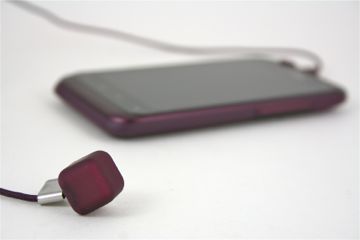
HTC takes a more targeted approach to smartphone users with the Rhyme, a new Android device for Verizon Wireless's network. It ships with some nice extras in the box — including a dock and pulse-in-the-dark charm — but what's really charming about the Rhyme is the attention to the software details. See what HTC gets right and what it gets wrong.
Body
The Rhyme's lavender color is really nice, but I don't see too many dudes going for it. Color aside, the Rhyme has a somewhat vanilla design as far as HTC devices are concerned. It is plain looking, with conservative lines. Even so, it feels great in the hand, and the materials and quality of construction is top notch as always.
The battery cover has a soft-touch finish, and it feels really nice in the hand. I like that the edges are rounded in shape. I find it to be just the right weight. It's not heavy, but not so insubstantial as to feel cheap.
The display is large without being obnoxious. There are four capacitive buttons along the bottom of the screen. These four buttons offer the faintest haptic feedback imaginable. I liked it.
The left edge has only the microUSB port tucked close to the bottom. It's covered with absolutely the most annoying hatch I've ever encountered. First, it's difficult to pry open. Second, the plastic tether that keeps the hatch connected to the phone slides upward, effectively covering the port itself. You have to bend the hatch backward at a crazy angle in order to get the microUSB cable in. Further, the cable does not fit securely in the port. It became disconnected easily, which makes using the phone while charging a nightmare. (Other reviewers have noted no problems with the port on their review units, so it's possible Phone Scoop got a bum unit.)
The volume toggle is on the right side. It presents just enough of a profile so that your fingers can find it. The action was acceptable.
A physical camera key on the side would be nice, but HTC declined to include one. Along the top, HTC has positioned the 3.5mm headset jack for stereo headphones and a power/lock key. The power key is just about perfect. It's large enough to find it easily, and travel and feedback were spot on.
Once the battery cover is removed, users can access the memory card slot next to the battery. Want to pull the battery? You're out of luck. It is sealed into the phone, and cannot be removed. That's a major design no-no as far as I am concerned. Forget about carrying a second battery for watching movies on that long flight, or replacing the battery in a year and half when it can't hold a charge as well.
The Three S's
Screen
The Rhyme has a 3.7-inch display that packs in the standard 480 x 800 pixels. It looks great. Colors are rich and text, icons, and graphics are smooth. Finding rough, pixelated edges anywhere is a challenge. Indoors, it looks fantastic, and outside it was surprisingly readable. It isn't stunning, but it is usable, and that's more than I can say for most displays when out catching some sun.
Signal
Signal performance was iffy with the Rhyme. Sitting on my desk, it captured two bars where other phones would get three or four. The Rhyme stayed connected firmly to Verizon's network, though it did drop down to Verizon's older 1xRTT network several times. It didn't drop any calls, nor did it miss any. Some data sessions stalled out when loading web pages in areas that showed less coverage, though. There's no LTE 4G in this phone.
Sound
Voice calls placed through the HTC Rhyme sounded good for the most part. They had a warm tone, and were generally free of interference and noise. The earpiece is capable of producing enough volume that calls can be heard over the din of a household or blaring TV. The loudest environments — bars or restaurants, construction sites, etc. — will overwhelm the Rhyme's earpiece. Call quality over the speakerphone was also good, though I noticed a bit more noise. Volume was acceptable, but not loud enough for a busy office. Ringers and alert tones could be set loud enough that you won't miss calls, but the vibrate alert was anemic.
Battery
I was pleased with the Rhyme's battery life — which basically means it didn't die on me during the middle of the day. The Rhyme can easily pace itself through a long day's use. It won't last two days, though, and probably not more than 1.5 days. Using the illuminated charm didn't appear to have any impact on battery life. Bottom line, you're going to need to keep an eye on the battery strength indicator on the second day if you don't charge every night.
Accessories
Charm
I have to admit, I don't really *get* the charm. The charm is a cube that's on a cable and needs to be plugged into the headphone jack. The idea is to drop the Rhyme in a purse (or bag) and leave the charm's cube exposed. When you have an incoming call, SMS, IM, or other message, the charm will gently pulse with light to alert you to the message. This could be why the vibrate alert is so weak.
The pulsing light is barely visible when out and about during the day, so it would be easy to miss. It is much more visible in dark places, such as restaurants or bars. If you're going to have a pulsing light at the dinner table, I honestly don't see how that's any less distracting than a quick buzz or ring when you get an SMS.
Last, the charm can be firmly attached to the Rhyme via a hook. This means if the charms starts pulsing, you can yank on the charm to retrieve the phone from the depths of your purse (or bag).
Dock
Who doesn't like using a dock for their smartphone? The Rhyme's dock may be plain looking, but it charges the phone through three small contacts that are on the back. This means you can drop the phone into the dock without worrying about carefully aligning a delicate microUSB port. You can also grab it quickly and run out the door.
The dock puts the Rhyme into dock mode, which prioritizes the clock, alarm app, and notifications so that you can always be informed without having to pick the phone up all the time.
Headphones
The Rhyme also ships with a pair of headphones, which HTC says are of higher quality than they might otherwise include with a phone. I suppose they are slightly above average as far as out-of-the-box headphones go, but that's not saying much. There's no way in hell they'd replace my own favorite pair of headphones. The one thing that HTC says about them is that they are supposed to be tangle free. They are, no doubt. Perhaps the worst, though, is that they are rather large to be in-ear headphones. For example, I couldn't comfortably insert them into my ear canal. I'd posit that my ears are larger than most, so the likelihood that these headphones will fit comfortably in the ear of a woman isn't very high.
Basics
Menus
The Rhyme ships with the newest Sense software from HTC on top of Android 2.3.3 Gingerbread. With a 1GHz processor spinning this Rhyme's engines, performance of the system software was excellent.
The Rhyme includes HTC's newer lock screen. When the display is woken from sleep, there are four (customizable) app shortcuts at the bottom of the screen. Out of the box, they are the phone, email, camera, and text message apps. Pick the one you want and slide it down, and the phone will go straight to that app. Awesome. If you want to go to the home screen, grab the circle from the bottom of the lock screen and drag it up.
Aside from the lock screen, the main home screen panel has been slightly revised. Stacked on the left side are shortcuts to the email, messaging, calendar, and camera apps. What's great is these shortcuts are dynamic, with little trays that slide open to show you the most recent email, SMS, calendar appointment, and image. It's a cute way to take a peek at your most recent messages without fully opening the associated app. There are also two large software buttons in the bottom corners that take you to the main menu and the phone app.
The rest of the Sense home panels are mostly unchanged compared to previous versions, though if you swipe left/right fast enough, you can make all seven panels spin like a merry-go-round. There's no practical reason for this, but I guess some might think it's fun. The panels are stuffed with HTC's typical widgets as well new music and video widgets.
Sense offers amazing flexibility for adjusting the look and behavior of the home screen and menus thanks to its scenes, skins, lock screen adjustments and on and on.
The main app menu uses the new Gingerbread-style set up with some added HTC flair. The apps are listed in grid fashion with 16 apps visible at a time. Swipe up and the entire screen slides up until there are 16 new apps to show. There are HTC-made controls at the bottom for marking favorites and looking at recently downloaded apps. The main app menu can be customized heavily depending on user preferences. This includes the addition of folders and other tools to organize applications.
Calls/Contacts
HTC's treatment of the phone application doesn't change too much from previous versions of Sense.
By default, the phone app opens with the dial pad on the bottom half of the screen and your top favorites above it. Press the favorite you want to call and bingo, you're connected. The default action in the "People" tab is to search through your contacts. Start typing a name and Sense starts to search for it immediately. You usually only have to type a few letters to find the person for whom you are looking.
As with most Android phones, if you've synced the Rhyme with a Facebook account, the device automatically adds not only your friends' Facebook profile pictures to their contact info, it also ports over any phone numbers stored in their Facebook profile.
The synergy between the calling and contacts apps is very well done with Sense. I like what HTC has done to make them one tool, rather than separate functions. For example, both the calling and contact applications share the same sliding dock at the bottom that lets you sort through contact groupings with a simple swipe of the thumb.
Messaging
Sense and Android together offer a wide range of messaging options on the Rhyme, with all the basics covered and then some.
There are several different avenues to get your email. First, there is the generic email program. It offers a nice user interface for sorting through messages and works with pretty much any POP3/IMAP4 or Exchange email account you could throw at it. Then there's the native Gmail client, which continues to be one of the best mobile email experiences available.
The Rhyme skips the native SMS app in favor of HTC's version. The main difference is that the HTC app is skinned to look like the software on the rest of the phone. It also offers a dynamic widget that lets you page through your messages from the home screen.
The native Google Talk IM app is on board and functions exactly as it does on other Android phones. The Rhyme skips support for third-party chat apps, so you'll have to seek them out in the Android Market.
There are a number of ways to connect to social networks with the Rhyme. First, there's HTC's FriendStream. The FriendStream app reaches into your Facebook and Twitter accounts and pulls down status updates in a stream that you can look at quickly. You can also use HTC's Peep application for Twitter, though I prefer the official Twitter application. The native Facebook app is also better than FriendStream for more fully interacting with your account. Facebook is preloaded; Twitter isn't.
Extras
Media
Music
The HTC-skinned music application on the Rhyme does all the same things that the stock Android app does, it just looks a little nicer. You can sort through tunes in the usual way, via artist, song, album, genre, composer, etc. Music can be sideloaded on the microSD card.
If you want to purchase music directly from the handset, you'll have to use Verizon's V CAST Music app (which I don't recommend, because it's expensive as hell), or download the Amazon MP3 app. You won't find Slacker or Pandora, but you know where to find them.
Video
The on-board video app handled all the video files that I threw at it with no problem. Playback was smooth. Movies look good on the large screen. The Rhyme also has the standard YouTube application and Verizon's V CAST Video.
HTC has also included its new Watch movie/TV show rental/download service. Fees are in-line with other content providers, though the selection of movies isn't robust as what Blockbuster or iTunes offers.
Camera
Camera
The Rhyme's 5-megapixel camera is fairly solid, and the software is carried forward from other Sense devices. Lack of physical camera key aside, it scores well on pretty much every other detail.
The lock screen camera shortcut is a blessing. You can also launch the camera from the home screen. There are controls on the right side of the camera's viewfinder that lets you adjust the flash and effects without opening the menus. This is nice. Fast access to the flash on/off is a must-have feature for me.
The main settings can be reached from a software button in the bottom right corner of the screen. From here, you can adjust the shooting mode, exposure, saturation, sharpness, and add effects. ISO (the camera's "film speed") ranges from 100 to 800. The camera natively shoots in a wide 5:3 aspect ratio. You have to change it to 4:3 to get the full megapixel count. Other options include geo-tagging, face detection, and an on/off switch for auto-focus.
The Rhyme has touch-to-focus; if you see something on the display and you want it to be in focus, press it. The camera will focus on that spot. Press the shutter button on the screen to actually take a picture. The Rhyme focuses and shoots pictures quickly. The review screen lets you send the photo off wherever you want to send it with just a few quick taps.
Gallery
As with other Sense phones, the Rhyme uses an HTC-made gallery. It can be opened from either the camera or the menu, and presents pictures in either a timeline or via grid. The timeline mixes pictures and videos into one long stream of images and movies.
I really like the sharing tools in the Gallery. While you're browsing your photos, you'll notice some sharing icons at the bottom of the gallery for Facebook, Flickr, or Connected Media (like your HDTV), Peep, Gmail, Picasa, and so on.
Pictures can be cropped and rotated, and select effects can be applied. If you want to edit things such as exposure, you can do so only with these effects, such as Auto-enhance, Overexposed, and High Contrast. You can also add frames to photos.
Photos/Video
Photos
The Rhyme's 5-megapixel shooter was mostly accurate with exposure, white balance and color. Focus was surprisingly good, and the Rhyme could take close-up shots (macro) that were crisp and detailed. The camera handled lighting changes well. It took consistently good pictures outdoors and indoors.
The photos are definitely worth sharing with friends through the social network and/or image sharing service of your choice.
Video
The Rhyme can capture video at a maximum resolution of 720p. The video I shot was crystal clear and full of sharp details. I was actually surprised at how well the Rhyme was able to focus and get things such as exposure and white balance correct. The other not-too-common feature offered by the Rhyme is the ability to record stuff that plays back in slow motion. It records at double speed and then plays back at normal speed. I wish this feature were more prevalent. It's not always useful, but it sure opens the door for some creativity.
You can definitely record YouTube-worthy moments with the Rhyme.
Browse/Customize
Browser
It's a shame the Rhyme doesn't have LTE. Despite its lack of 4G, the Rhyme offers a solid browsing experience through the stock Android browser. Verizon's EVDO 3G network is still reasonably speedy and robust. The Rhyme's browser ran into trouble a few times thanks to poor network coverage. The result was stalled web sites, though it wasn't a terribly common occurrence.
Customize
Phone Scoop has noted in the past how HTC's Sense user interface is one of the best when it comes to user customization. The Rhyme isn't any different in that regard. Sense lets users adjust about every element of the home screens, wallpapers and other behaviors of the phone.
Extras
Apps
The Rhyme can access all of the apps in the Android Market and more. If you want apps, there are plenty out there. The phone itself doesn't ship with too, too many pre-installed applications. Just the usual Verizon-branded stuff. There's plenty of memory (823MB) available for you to install applications on the internal memory — not to mention the included 8GB microSD card.
Bluetooth
The Rhyme can connect with mono and stereo headsets with no problems. I didn't encounter any issues when pairing different devices, though sound quality through both mono and stereo headsets was average. The Rhyme can also be used to push pictures (and other files) between devices, such as PCs or other phones.
Clock
The Rhyme is one of the first HTC devices I've seen that has a nearly-impossible-to-see lock screen clock. It's tiny, faint, and the font is way too thin. You have to hold the phone close to see it, and bright sunlight washes it out.
Beyond the lock screen, there are a host of different digital and analog clock faces from which users can pick. The HTC Clock app is crazy good. Basically, every clock-related function you can think of is packed in, such as stopwatch, countdown timer alarms, world clocks, etc. The weather is thrown in for good measure. It looks classy and is a breeze to use.
GPS
Both VZNavigator and Google Maps are installed on the Rhyme out of the box. Both offer voice-guided turn-by-turn directions between points, and can re-route you if you get lost. Google Maps is particularly impressive because it now offers offline use (in case you roam out of network coverage) as well as 3D maps for a limited number of cities. The VZNavigator software is very good, but it costs $10 per month to use.
Mobile Hotspot
The Rhyme supports the mobile hotspot features, allowing up to five other Wi-Fi devices to connect to the internet via Verizon's 3G network. The software is fairly intuitive and I had no trouble setting up a hotspot and connecting several devices.
Wrap-Up
The HTC Rhyme for Verizon Wireless is certainly a decent phone. It handles most tasks with aplomb, and offers an interesting mix of add-ons to make the experience unique.
As far as basics go, the Rhyme has a good screen, decent signal performance, and worked well for voice calls. Battery life was slightly above average for an Android smartphone. The hardware is put together well, and were it not for the microUSB hatch and the non-removable battery, I'd say it's a great piece of kit. Whether or not lavender is your color — well, only you can answer that one.
The Rhyme's messaging prowess is just as good as any other HTC Sense phone, the media capabilities are solid, and the camera does a consistently better-than-average job. Throw in the dock, charm, and headphones, and you could call it the total package. For $199.99, it seems like a bargain, but I am sure some users would prefer to have the accessories available as an option and save $50 on the purchase price of the phone.
Would I recommend the Rhyme? Sure, for those looking for an off-the-beaten-path Android experience, it has the right charms to make it an appealing phone (even if it is purple).

Comments
Compare to the Incredible 2


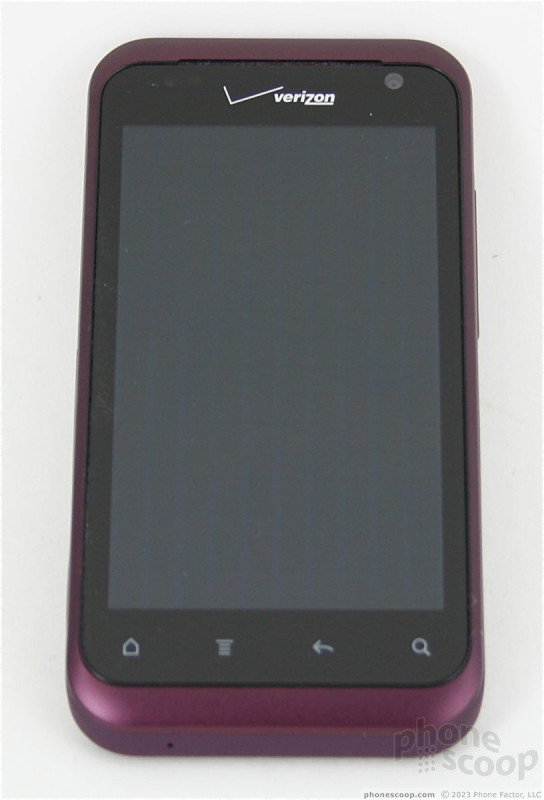









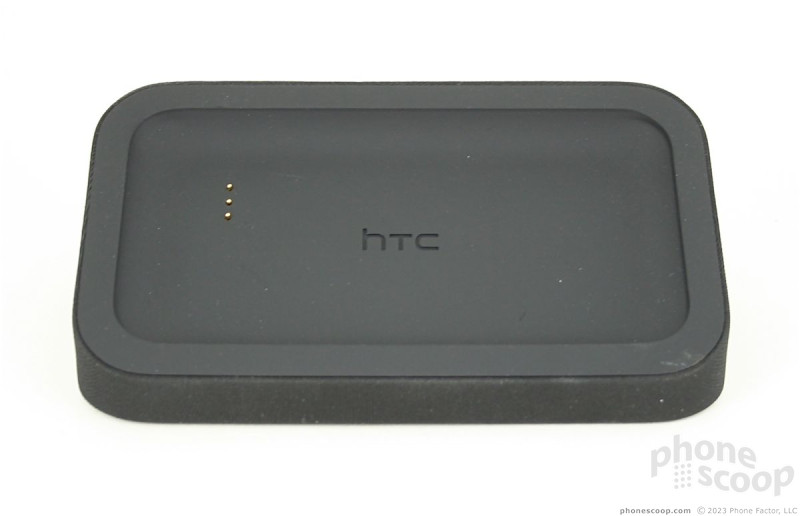









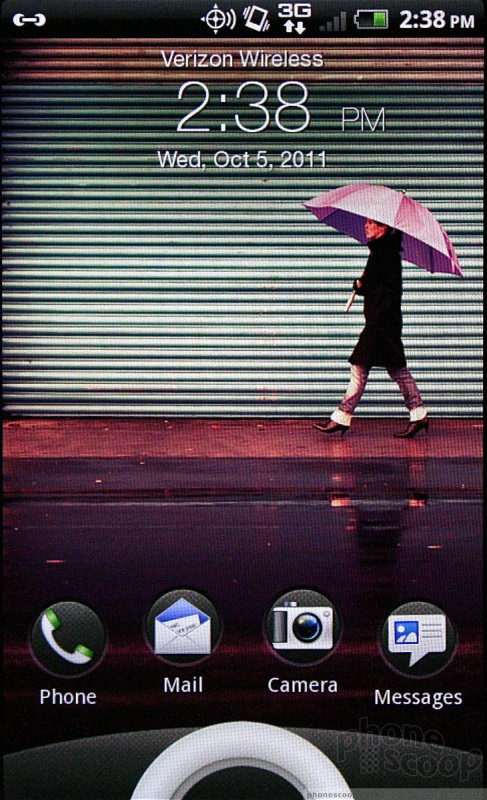





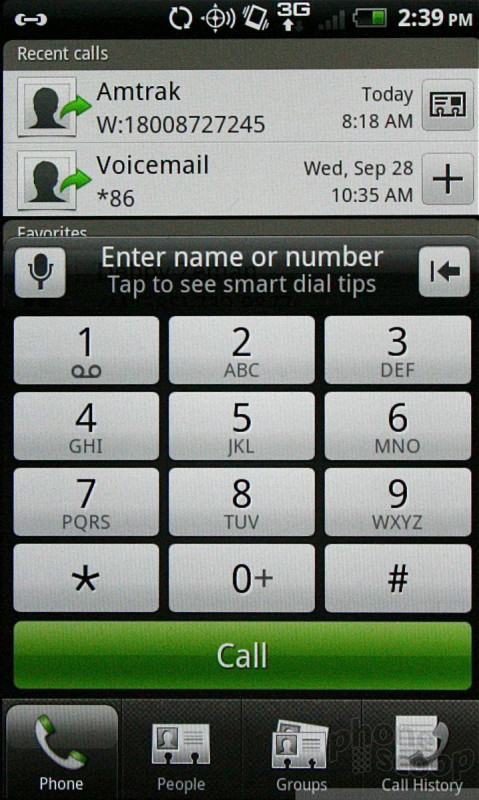



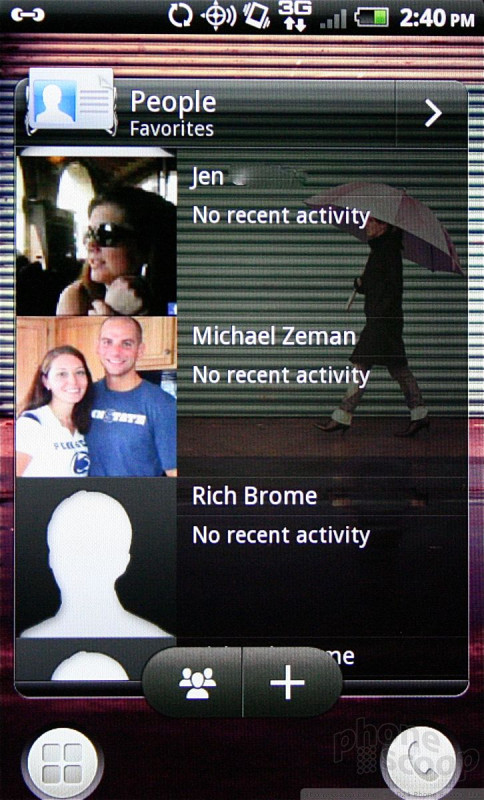



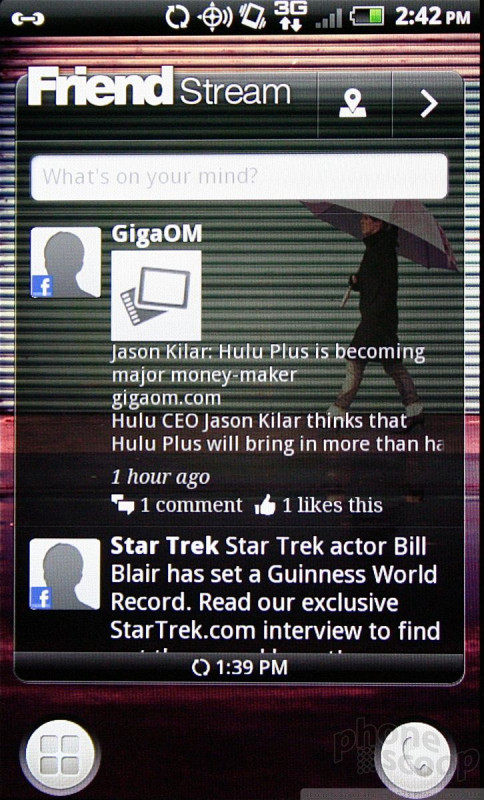



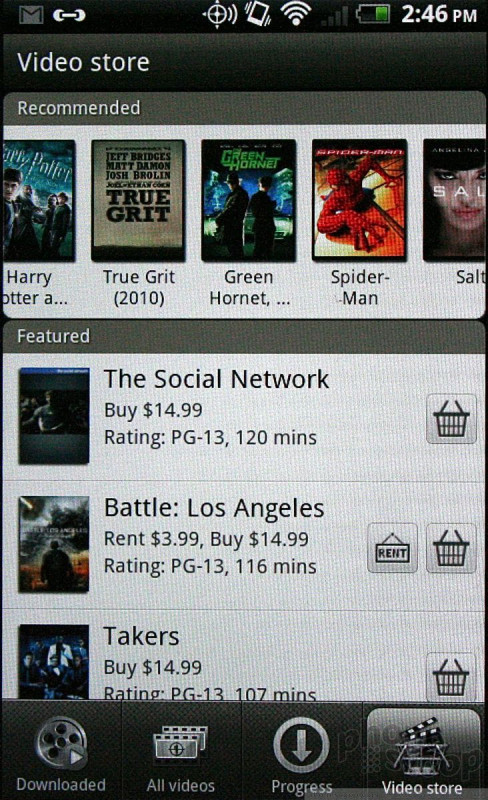



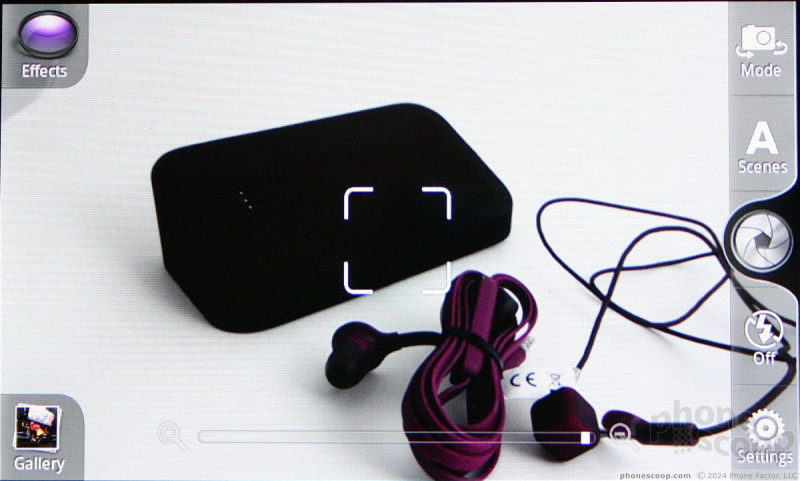



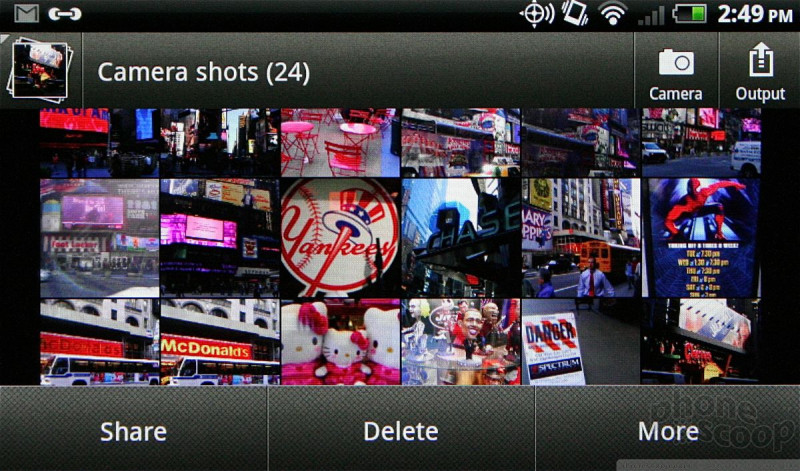



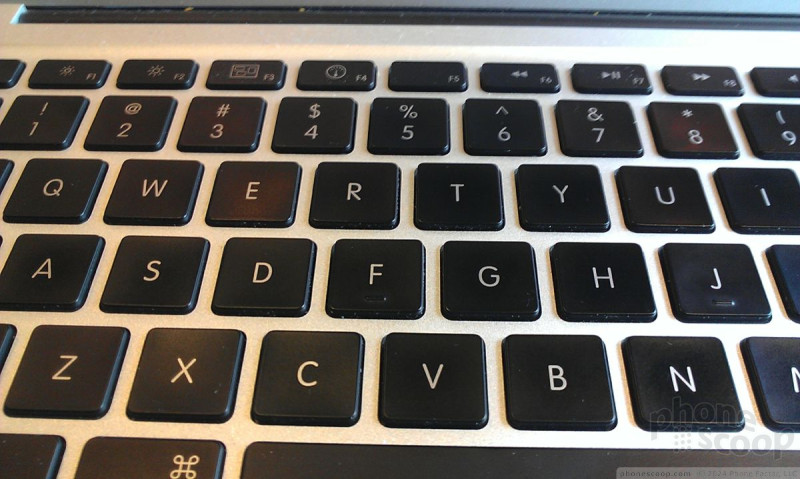


















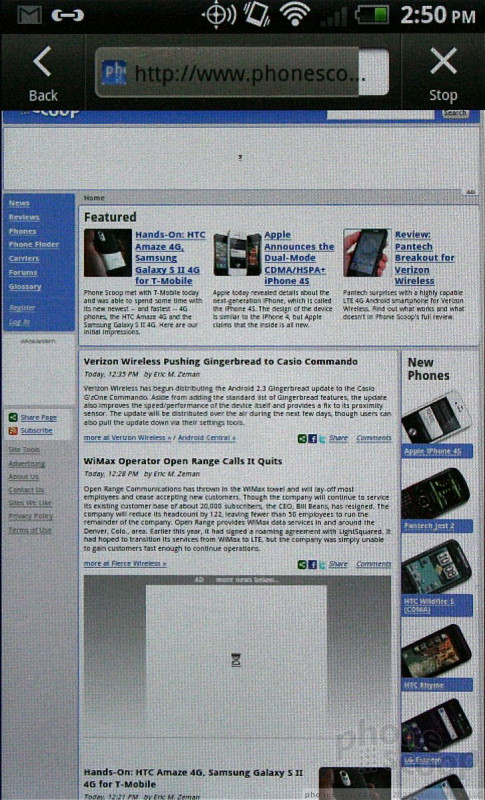



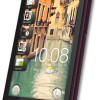 HTC Rhyme for Verizon Focuses On Usability and Reason
HTC Rhyme for Verizon Focuses On Usability and Reason
 HTC Rhyme
HTC Rhyme









